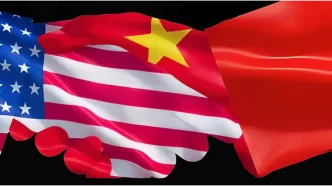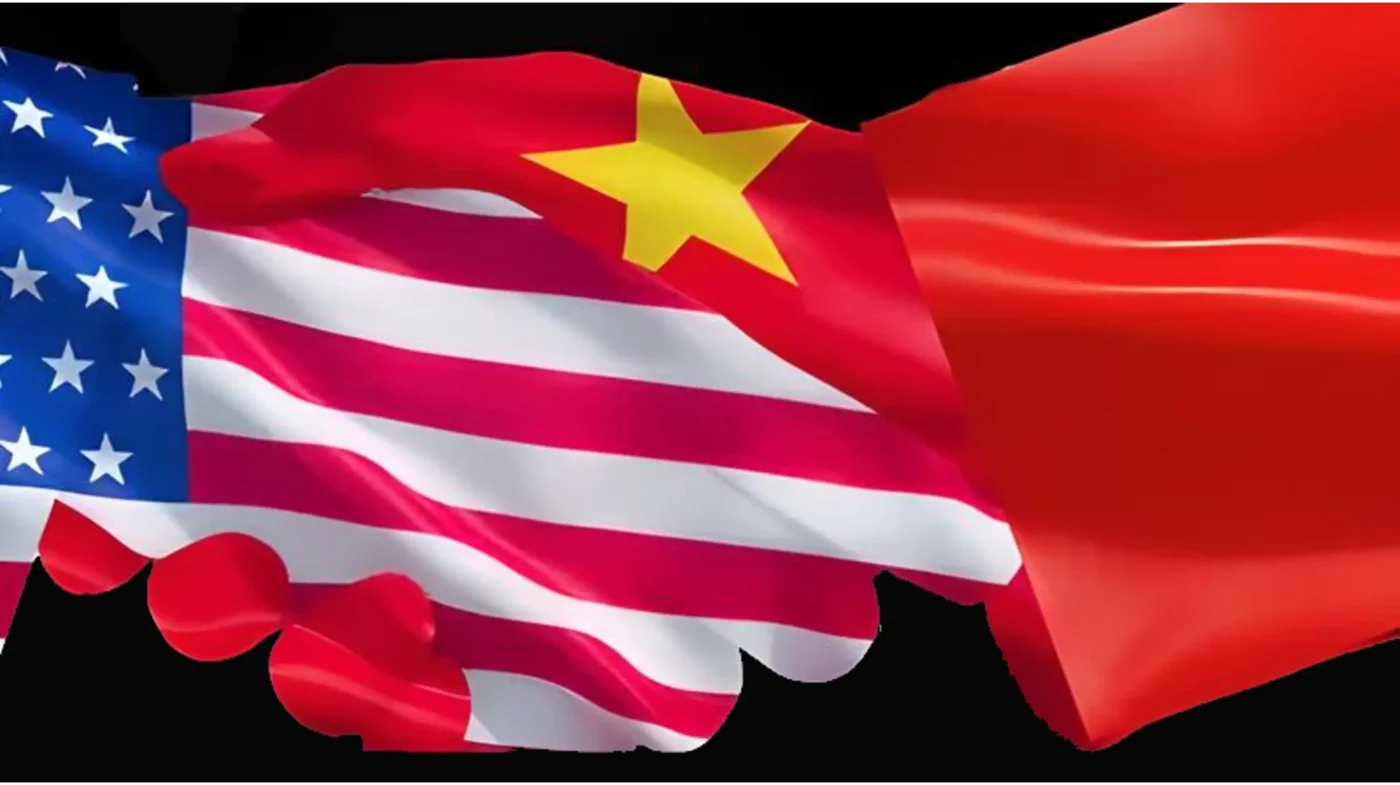In a significant step toward deepening post-war cooperation, Vietnam and the United States have inaugurated a new unexploded ordnance (UXO) disposal training range, marking a milestone in their shared efforts to address the lingering scars of the Vietnam War. The launch, coinciding with the 50th anniversary of Vietnam’s National Reunification, underscores a commitment to reconciliation and practical collaboration, as both nations work to clear deadly remnants of conflict while celebrating a historic milestone with spectacular fireworks in Ho Chi Minh City.
A Shared Mission to Heal War Wounds
The UXO disposal training range, recently opened in a collaborative effort between Vietnamese authorities and U.S. partners, aims to enhance Vietnam’s capacity to safely neutralize unexploded bombs and mines that continue to pose a lethal threat decades after the war’s end. Millions of tons of ordnance dropped during the conflict remain buried across the country, particularly in central provinces like Quang Tri and Quang Nam, where farming communities and children are most at risk. According to official estimates, UXOs have caused over 100,000 casualties since 1975, a grim reminder of the war’s enduring impact.
The facility, supported by U.S. funding and expertise, will train Vietnamese teams in advanced detection and disposal techniques, building on years of bilateral programs. A U.S. embassy spokesperson highlighted the initiative as a symbol of renewed trust, stating, “This training range represents our shared resolve to turn a painful past into a safer future” as reported by Vietnam News on May 6, 2025. Vietnamese officials echoed this sentiment, emphasizing that the project aligns with national priorities to protect citizens and reclaim land for development.
Beyond the immediate safety benefits, the training range carries broader geopolitical significance. As Vietnam navigates its role in a tense regional landscape, particularly with ongoing South China Sea disputes, strengthened ties with the U.S. signal a strategic pivot. Analysts suggest this cooperation could pave the way for expanded military and economic partnerships, though Hanoi remains cautious to balance relations with other global powers like China and Russia.
Historical Context of a Painful Legacy
The Vietnam War, which ended with the fall of Saigon on April 30, 1975, left behind not only political and social divisions but also a physical landscape scarred by unexploded munitions. The U.S. dropped an estimated 7.5 million tons of bombs during the conflict, more than twice the amount used in World War II across all theaters. Large swathes of rural Vietnam became no-go zones, with cluster bombs and landmines claiming lives long after peace was declared.
Efforts to address this legacy began in earnest in the 1990s, following the normalization of diplomatic relations between Hanoi and Washington. Since then, the U.S. has contributed over $150 million to UXO clearance and victim assistance programs, while Vietnamese authorities have deployed specialized units to high-risk areas. Despite progress, experts estimate that clearing all remaining ordnance could take another century, a daunting timeline that underscores the urgency of initiatives like the new training range.
The human toll of UXOs extends beyond physical injury. Families in affected regions often live in fear, unable to cultivate land or build homes without risking catastrophe. Stories of children mistaking bomblets for toys are tragically common, fueling calls for greater international support. The training range, while not a complete solution, offers hope by equipping local teams with the skills to accelerate clearance efforts and reduce casualties.
Celebrating 50 Years of Reunification
As the UXO training range launch unfolded, Vietnam marked a historic occasion with vibrant celebrations for the 50th anniversary of National Reunification. In Ho Chi Minh City, formerly Saigon, the night sky erupted in a dazzling fireworks display, drawing thousands of residents and visitors to the city center. The event, held on April 30, 2025, commemorated the reunification of North and South Vietnam, a defining moment that ended decades of division and war.
The fireworks, launched from multiple points along the Saigon River, illuminated landmarks like the Bitexco Financial Tower and Notre-Dame Cathedral Basilica. Crowds cheered as bursts of red, gold, and green reflected Vietnam’s national colors, symbolizing unity and resilience. A local resident, Tran Minh Anh, shared her pride with state media, saying, “This celebration reminds us of our strength as one nation after so much hardship” as reported by Vietnam News on May 1, 2025.
The reunification anniversary also prompted reflection on Vietnam’s journey over the past five decades. From a war-torn nation, it has emerged as a rapidly growing economy and a key player in Southeast Asia. Leaders used the occasion to reiterate commitments to sustainable development and global integration, themes that resonate with collaborative projects like the UXO training range. Prime Minister Pham Minh Chinh, speaking at a related event in Hanoi, emphasized that “reunification is not just a historical event but a call to build a peaceful, prosperous future” as quoted by local outlets.
Geopolitical Implications of Deepening Ties
The timing of the UXO training range launch, alongside reunification celebrations, highlights the evolving nature of Vietnam-U.S. relations. Once adversaries, the two countries have forged a comprehensive partnership covering trade, security, and humanitarian issues. The U.S. is now one of Vietnam’s largest export markets, with bilateral trade surpassing $100 billion annually, while joint military exercises and defense dialogues have become routine.
Yet, this relationship is not without complexities. Vietnam’s leadership remains wary of over-reliance on any single foreign partner, given its proximity to China and historical tensions. While UXO clearance is a relatively uncontroversial area of cooperation, some analysts speculate it could serve as a stepping stone for broader military engagements—a prospect that may draw scrutiny from Beijing. For now, both Hanoi and Washington appear focused on tangible outcomes, with the training range offering a practical framework for collaboration.
Public sentiment in Vietnam toward U.S. involvement is mixed but increasingly positive. Younger generations, with no direct memory of the war, often view American culture and investment favorably, while older citizens remain cautious due to historical grievances. Social media posts on platforms like X reflect this divide, with some users praising the UXO initiative as a gesture of goodwill, while others question whether it fully addresses past wrongs like Agent Orange exposure—a separate but related issue still under negotiation.
Challenges and Future Prospects
Despite the optimism surrounding the training range, significant challenges remain. Funding for UXO clearance, while substantial, falls short of the scale needed to address the problem comprehensively. Training programs must also contend with logistical hurdles, such as accessing remote areas during monsoon seasons when flooding exacerbates risks. Moreover, coordination between international donors, local authorities, and non-governmental organizations requires sustained effort to avoid duplication or inefficiencies.
Looking ahead, the success of the training range could inspire similar initiatives elsewhere in Southeast Asia, where UXOs from various conflicts continue to endanger lives. Laos, for instance, faces a comparable crisis due to heavy bombing during the same era, and Cambodian border regions still harbor landmines from the Khmer Rouge period. Vietnam’s experience may offer a model for regional cooperation, potentially involving the U.S. and other partners like Japan or the European Union.
On the domestic front, the Vietnamese government faces pressure to balance UXO clearance with other priorities, such as infrastructure development and climate adaptation. Rural communities, while grateful for demining efforts, often call for economic support to rebuild livelihoods once land is cleared. Integrating these needs into national policy will be critical to ensuring that post-war recovery translates into lasting prosperity.
As Vietnam reflects on 50 years of reunification and forges ahead with partners like the U.S., the dual focus on healing war wounds and celebrating national unity offers a powerful narrative. The fireworks over Ho Chi Minh City may fade, but the commitment to a safer, stronger future—embodied in projects like the UXO training range—promises to endure. How these efforts unfold in the coming years will test the resilience of a nation determined to reclaim its land and its peace.
















